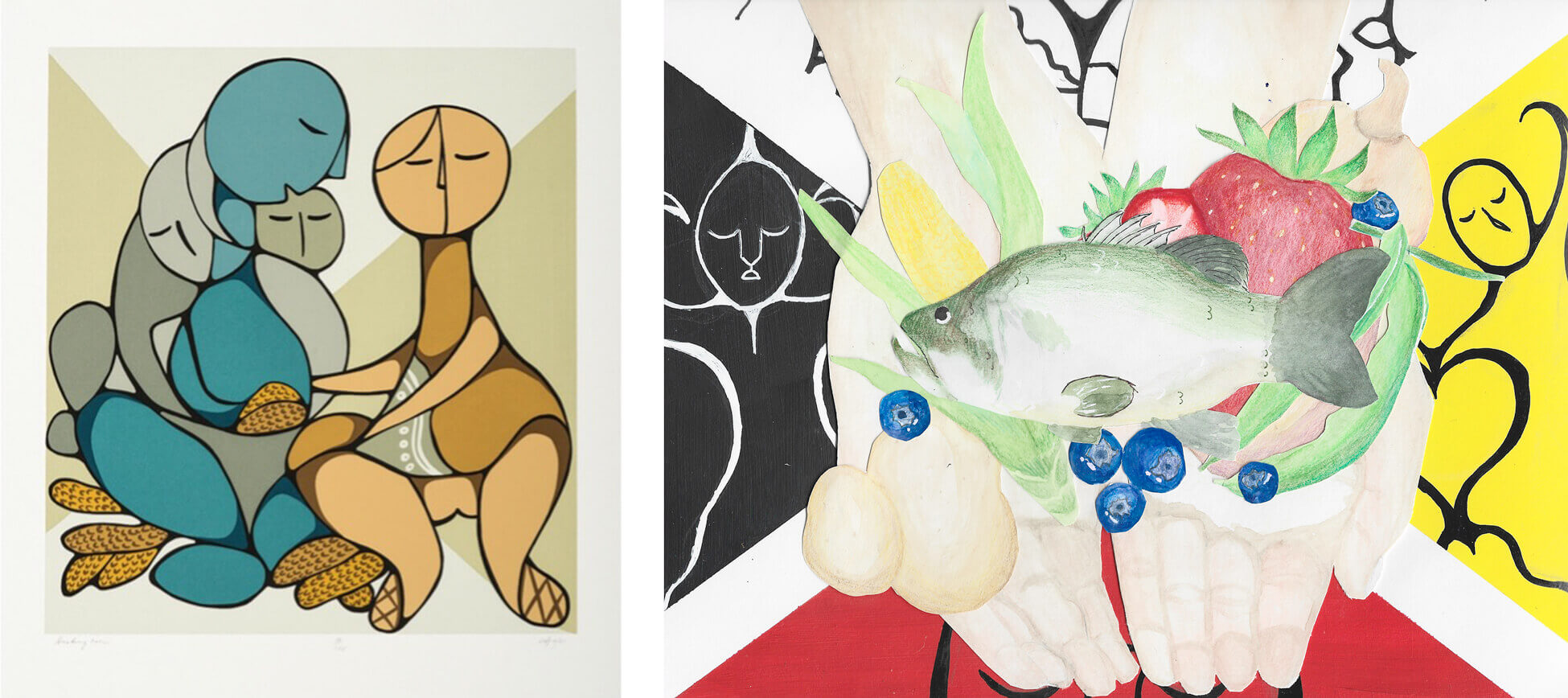“This artwork reflects the significance of nourishing the spirit through food in Ojibwe culture. In the hands that hold the food are the three vegetables squash, beans, and corn. These vegetables are important—as opposed to the rest of the food in the hands—because they are the Three Sisters. The Three Sisters depict harmony and cooperation and grow exceptionally well when planted together. The Three Sisters are important to the diet of many Indigenous nations across Turtle Island. In the background, the four colours on the Medicine Wheel can be seen. These four colours, white, yellow, red, and black, represent the spiritual, emotional, mental, and physical states of being, respectively, all of which are nourished by food. The inspiration for the illustrations inside of the four colours comes from Daphne Odjig’s Woodland style. Overall, this artwork celebrates and emphasizes the connections between the land and food and how each plays a harmonious role in nourishing the spirit.”
—Shaylah Shawongonabe (Grade 10, Sudbury Secondary School, Greater Sudbury, Ontario)
Anishinaabe artist Daphne Odjig (1919–2016) brought Indigenous political issues to the forefront of contemporary art and theory through her paintings and prints featuring a distinct style characterized by curving contours, strong outlines, and overlapping colours and shapes.
